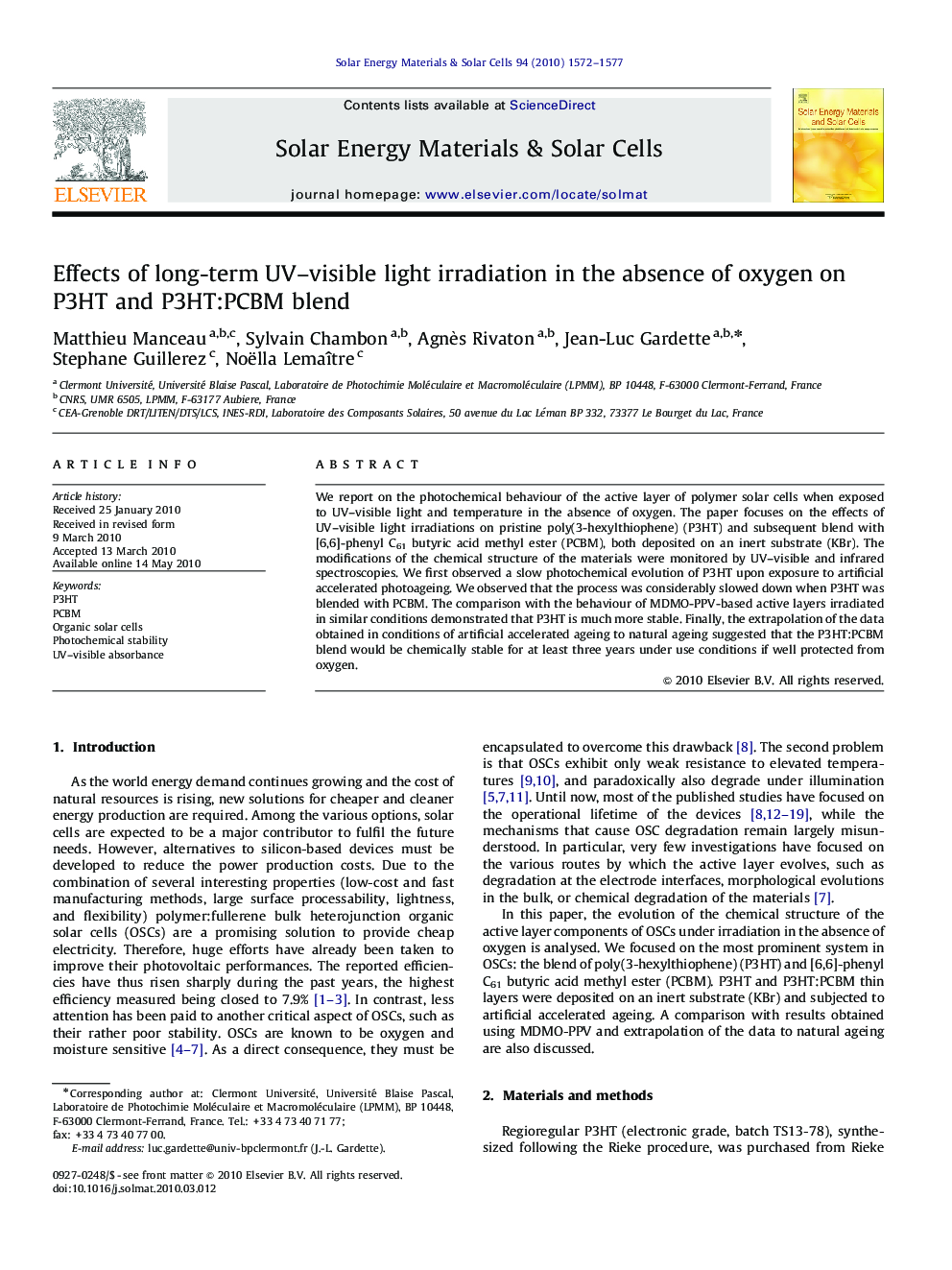| Article ID | Journal | Published Year | Pages | File Type |
|---|---|---|---|---|
| 79506 | Solar Energy Materials and Solar Cells | 2010 | 6 Pages |
We report on the photochemical behaviour of the active layer of polymer solar cells when exposed to UV–visible light and temperature in the absence of oxygen. The paper focuses on the effects of UV–visible light irradiations on pristine poly(3-hexylthiophene) (P3HT) and subsequent blend with [6,6]-phenyl C61 butyric acid methyl ester (PCBM), both deposited on an inert substrate (KBr). The modifications of the chemical structure of the materials were monitored by UV–visible and infrared spectroscopies. We first observed a slow photochemical evolution of P3HT upon exposure to artificial accelerated photoageing. We observed that the process was considerably slowed down when P3HT was blended with PCBM. The comparison with the behaviour of MDMO-PPV-based active layers irradiated in similar conditions demonstrated that P3HT is much more stable. Finally, the extrapolation of the data obtained in conditions of artificial accelerated ageing to natural ageing suggested that the P3HT:PCBM blend would be chemically stable for at least three years under use conditions if well protected from oxygen.
